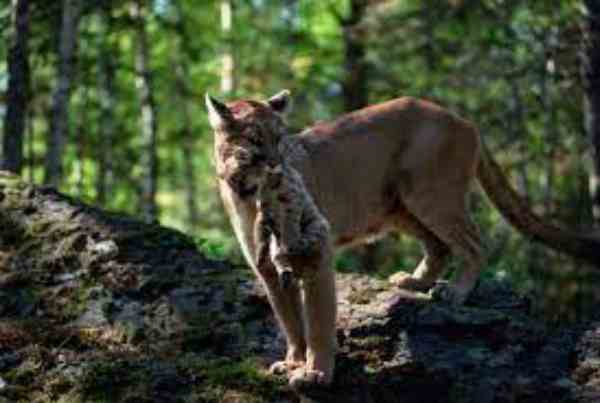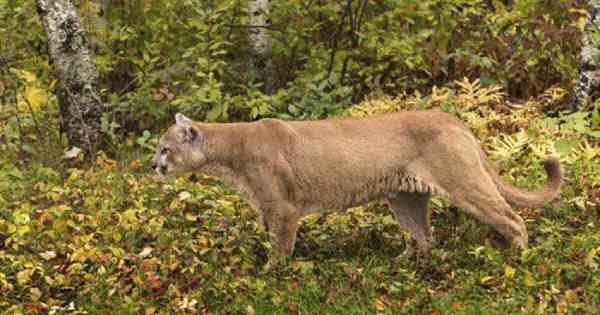Cougars, or mountain lions, are apex predators found throughout much of North America. They have been documented in Arkansas since the early 1800s and today they can be found in a number of locations including the Ozark Mountains and the Ouachita National Forest. Although sightings are rare, surveillance cameras have been placed in Cougar habitats to monitor activity closely. Experts believe that populations will continue to grow as long as people are respectful of their habitats and avoid disturbing them unnecessarily.

Table of Contents
Are there Cougars in Arkansas
It is believed that in recent decades, cougars have begun to re-establish themselves in the wilds of Arkansas. Reports of sightings, tracks and other evidence have been observed all around the state, leading researchers to conclude that cougars are making a comeback. It is thought this is attributable to animals from Oklahoma and Texas crossing into Arkansaw. However, there are no breeding populations confirmed in Arkansas as of now. While the interaction between humans and cougars in Arkansas is unlikely, it’s important for people to know how to act if they come across one of these majestic creatures in their travels.
Habitat
Cougar’s ideal habitat in Arkansas consists of wooded ridges and river bottomlands, allowing them to access food sources like deer or smaller animals while also providing protective cover. Cougars prefer remote areas with sparse human populations, so they don’t feel threatened by people; however, their presence can still be felt in several Arkansas communities as they try to adjust to living around humans.
Diet:
Cougars have a varied diet which includes deer, rabbits, porcupines, beavers and other small mammals. However, depending on their habitat and the season, they can also prey on larger animals like elk or coyotes. They are also known to scavenge on carrion if available. Cougars are apex predators and strategically stalk their prey before lunging at it in an explosive burst of speed – a feat made possible by their powerful hind legs combined with thick muscles throughout their bodies. They hunt day and night and usually prefer to take down animals that are smaller than themselves but there have been reports of them tackling much bigger prey.

Colour
Cougars’ sleek frames are usually covered in slightly-tipped fur that appears tawny in colour, which can range from a pale yellowish brown to grey. This tawny colour acts as an effective camouflage when the cougar is found living amongst rocky outcrops, dry grass fields, or dense forests. The coat on these cats can also be darker or lighter depending on the environment they inhabit; specifically, those in warmer climates tend to have paler-coloured coats than those in colder regions of the world. Cougars also have long tails with a dark tip resembling a raccoon’s that is distinct against the golden hues of their body fur.
Size, Lifespan and Weight
The average adult cougar is capable of reaching 5-9 feet in length and weighs anywhere between 70 to 180 lbs. It is amazing to think these large predators can live up to 8-10 years in the wild, with lifespans of 12-15 years in captivity. Cougars have powerful hind legs and swivelling back feet that allow them to leap over 20 ft distances both horizontally and vertically.
Predators
There are some creatures capable of hunting and killing cougars. Grey wolves are sometimes able to compete successfully for food and territory with cougars and even kill them if there is an imbalance of power. Another predator that occasionally takes on cougars is the American black bear, although more commonly bears will search for food sources such as small mammals rather than prey on larger creatures like cougars. There have been instances where packs of coyotes have taken down a smaller or elderly cougar.

Reproduction
The mating season for cougars typically takes place between December through March each year. Interestingly, when female cougars reach sexual maturity at roughly two years of age, they usually become independent from their mother and brother and look for mates outside of their immediate family. Litters typically contain one to six cubs that are born blind and helpless up until eight or nine weeks old. During this time, the mother protects them from predators by keeping watch and teaching them how to hunt before they ever venture out on their own.
Cougars sightings in Arkansas
Residents of the Ozarks in Arkansas recently reported an increase in cougar sightings, giving biologists cause for concern. The Arkansas Game and Fish Commission commissioned a study to investigate the situation, but results are not expected to be released until the fall. Although cougars were extirpated from Arkansas sometime before 1900, it is possible that individuals from other states have made their way into the area looking for new territory.
How many cougars are in Arkansas?
Currently, it is estimated that several dozen individual cougars now occupy various portions of Arkansas’s landscape
References:
https://www.arkansasonline.com/news/2018/sep/16/arkansas-cougar-sightings-continue-2018/
https://www.4029tv.com/article/big-cats-caught-on-camera-in-arkansas/4933487

Jeevan Kodiyan
An animal enthusiast with an interest in zoology, studying the behavior and activities of animals in the wild habitat. I work on research projects related to species conservation and endangered species protection. I also leverage zoology to become an educator, educating others about the importance of protecting our natural environment and the beauty of animals in their natural habitats.









